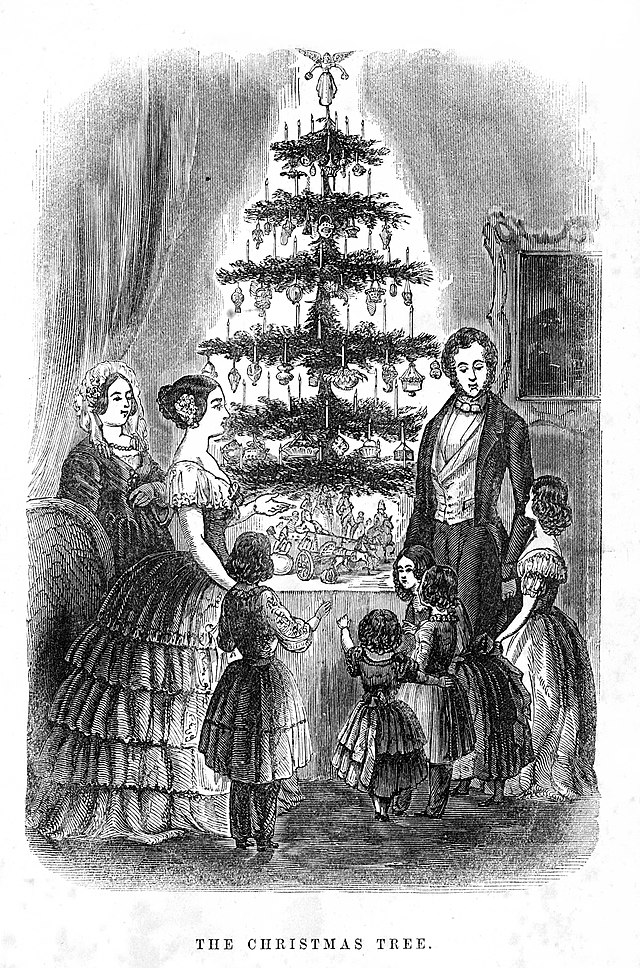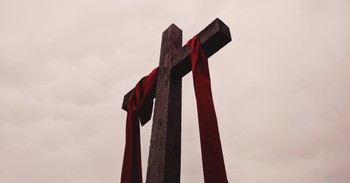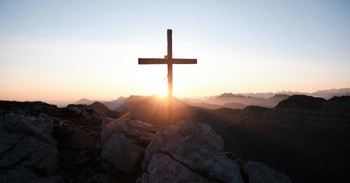It's said that the symbolic uses of evergreen trees can be traced back to origin in ancient Egypt and Rome and that the German tradition of candle-lit trees was first introduced to America in the 19th century. It is fascinating to learn the history of the Christmas tree, from the first winter solstice to the present-day — with the most famous modern-day Christmas tree in Rockefeller Center in New York City.
Ancient Roots and Symbolism of Christmas Trees
There are several origins of usage of an evergreen tree for symbolic meaning. Before Christianity, people paid special attention to green plants and trees in the winter. While modern people decorate their homes with pine, spruce, and fir trees during the holiday season, people in the ancient world hung evergreen boughs over doors and windows. Evergreen trees were believed to keep witches, ghosts, and evil spirits away in many countries.
The longest day and shortest night of the year fall on December 21 or December 22 in the Northern Hemisphere. People used to believe that the sun was a god, and that winter came every year because he became ill and lost his strength (Ibid.).
In ancient times, the solstice meant that the sun god would finally get well. They thought the evergreen boughs reminded him of all the green plants that would grow again when the sun god was strong, and summer came back.
The ancient Egyptians worshiped a god named Ra, who had the head of a hawk and wore the sun as a blazing disk on his head. When Ra was recovering from his illness, at the solstice, the Egyptians threw palm rushes in their homes, symbolizing life's triumph over death (Ibid.).
The early Romans celebrated Saturnalia, a festival of the solstice that celebrated the agricultural god Saturn. Farms and orchards were going to be green and fruitful as soon as the solstice hit. The Buddhists celebrated by decorating their temples and homes with evergreen boughs.
As a symbol of eternal life, the ancient Celt priests, known as the Druids from the now present-day United Kingdom, decorated their temples with evergreen boughs. As far as the Vikings were concerned, evergreens were a special gift from Balder, the sun god (Ibid.).
But the real origin of today's Christian tree traditions can be traced back to Germany.
The German Origin of the Christmas Tree
The tradition of decorating Christmas trees has a rich history that is closely tied to Christian traditions, particularly in Germany during the 16th century. This practice played a significant role in shaping the Christmas tree tradition we know today.
In Germany, devout Christians began the tradition of decorating trees in their homes as part of their Christmas celebrations. The use of evergreen trees held symbolic meaning, representing the eternal life offered through faith in Jesus Christ. These early Christmas trees were adorned with decorations and sometimes even edible items like fruits and nuts.
As time went on, the popularity of Christmas trees grew, but there was a challenge. Wood, typically used for the trees, became increasingly scarce. In response to this scarcity, some people began constructing Christmas pyramids made of wood. These pyramids were decorated with evergreen branches and candles, creating a festive and visually striking display.
One of the legendary stories associated with the addition of candles to Christmas trees involves Martin Luther, the Protestant Reformer. According to the legend, as Luther was walking home one winter night, he was struck by the beauty of the starry sky through the evergreen trees. Inspired by this scene, he decided to recreate it for his family. He erected a tree in their main room and decorated it with lighted candles, symbolizing the stars. This act is said to be one of the earliest instances of candles being used on a Christmas tree, and it contributed to the tradition's evolution (Ibid.).
How the Christmas Tree Tradition Came to America
Christmas trees were an odd commodity for most Americans in the 19th century. In the 1830s, German settlers in Pennsylvania had the first record of displaying one, though trees had been a tradition in many German homes before then.
There was a community of trees in the Pennsylvania German settlements as early as 1747. Even after the 1840s, Christmas trees were thought of as pagan symbols.
Comparatively, the Christmas tree was adopted late in America, as were many other Christmas customs. Christmas was sacred to New England Puritans. William Bradford, the second governor of the pilgrims, wrote that he did his best to stamp out "pagan mockery" of the observance, he even penalized anyone who did it frivolously (Ibid.).
In 1659, the General Court of Massachusetts issued a law making observing Christmas a penalty offense. People were fined for hanging Christmas decorations.
Oliver Cromwell preached against "the heathen traditions" of Christmas carols, decorated trees, and any expression of joy that desecrated "that sacred event." However, in the 19th century, German and Irish immigrants undermined the Puritan legacy (Ibid).
Queen Victoria's Christmas Tree
Queen Victoria and her husband Prince Albert, who was from Germany, were pictured with their children around a Christmas tree in 1846 in the Illustrated London News. The Christmas tree was here.
It was Victoria's first reign, and everything she did was immediately fashionable, not only in Britain but among the fashion-conscious East Coast American society as well.
As early as the 1890s, Christmas ornaments arrived from Germany and Americans were getting into Christmas trees. Europeans like their Christmas trees to be about four feet tall, while Americans like theirs to reach from floor to ceiling.
American Christmas trees were usually decorated with homemade ornaments until the early 20th century, while German-American trees were decorated with apples, nuts, and marzipan cookies. In addition to popcorn, berries, and nuts were mixed in.
It's thanks to electricity that Christmas trees can glow for days on end. As a result, Christmas trees appeared in town squares across the country, and decorating your own Christmas tree became a tradition.

*Source: The Christmas Tree - Godey's Lady's Book, December 1850, Public Domain
The Rockefeller Center Christmas Tree
Since the Depression, Rockefeller Center has had a Christmas Tree. In 1948, the tallest tree arrived at Rockefeller Center. From Killingworth, Connecticut, it was a huge Norway Spruce. The Rockefeller Center tree is on the west side of Fifth Avenue between 47th and 51st Streets in New York City.
Rockefeller Center planted its first tree in 1931. Construction workers placed a small, unadorned tree in the center of the construction site. A second tree was placed there two years later, this time with lights. Currently, the Rockefeller Center tree has over 25,000 lights.
Christmas Trees Traditions Around the World
Germany
Germans are often credited with popularizing the Christmas tree tradition. They decorate their trees with ornaments, lights, and tinsel. A common ornament is the "Christbaumschmuck," which includes glass baubles, angels, and stars. Under the tree, there's often a nativity scene.
Ireland
Irish families decorate their Christmas trees in the weeks leading up to Christmas, with many choosing December 8th, the Feast of the Immaculate Conception, as a significant date. Irish Christmas trees are decorated with ornaments, lights, and tinsel. It's also common to place a star or angel atop the tree. The tradition of the "Wren Boys" involves young people visiting homes with a decorated holly bush or wren on St. Stephen's Day (December 26th).
Greece
Greek Christmas trees are adorned with lights and ornaments. In Greece, the main Christmas decoration is a "kalikantzari" or "kallikantzari" - a small wooden vessel with a piece of a cross and holy water, believed to protect homes from mischievous goblins called "kallikantzari" during the Christmas season.
United Kingdom
British Christmas trees are decorated with ornaments, lights, and tinsel. A popular decoration is the Christmas cracker, a festive party favor that is often hung on the tree. In Scotland, it's traditional to have shortbread and a piece of coal as tree decorations.
Sweden
Swedes typically decorate their Christmas trees on December 13th, St. Lucia's Day. Swedish Christmas trees are adorned with small straw ornaments, wooden figures, and candles. One unique tradition is the "Julbock" or Christmas goat, which is sometimes included as a decoration.
Italy
Italians typically decorate their Christmas trees on December 8th, the Feast of the Immaculate Conception. In Italy, the "Presepio" or nativity scene is a significant part of Christmas decorations. Christmas trees are also popular and adorned with lights, ornaments, and tinsel.
Mexico
Mexicans celebrate the "Nochebuena" on December 24th and often decorate their Christmas trees during the holiday season. Mexican Christmas trees feature colorful ornaments, lights, and sometimes piñatas. The piñatas are broken on Christmas Eve, showering children with candies and small toys.
Australia
Given that Christmas falls during the Southern Hemisphere's summer, some Australians decorate "Christmas bush" trees, which have small red flowers that resemble ornaments. Many also incorporate native Australian plants into their Christmas decorations.
Russia
Christmas trees in Russia are often decorated on New Year's Eve, as it is a more significant holiday than Christmas in the Russian Orthodox tradition. Russian Christmas trees feature an array of ornaments, often including intricate, handcrafted decorations. Ded Moroz (Father Frost) and Snegurochka (the Snow Maiden) are traditional figures who bring gifts to children.
Philippines
Christmas tree decorations typically begin in September, the start of the Filipino Christmas season, and continue until early January. The Philippines is known for its extended Christmas celebrations. Christmas trees are commonly decorated with a combination of Western-style ornaments like lights, tinsel, and baubles, as well as traditional Filipino decorations like parols (star-shaped lanterns) and Belén (nativity scenes). Many homes and businesses participate in "parol" competitions to showcase their creative lantern designs.
Japan
Japan follows many Western traditions around Christmastime. Japanese Christmas trees are often adorned with lights, ornaments, and sometimes small origami decorations. While Christmas is not a traditional Japanese holiday, it has become an occasion for gift-giving and romantic dinners. In recent years, "Christmas cakes" have also become popular, and some families exchange gifts under the tree.
Africa
While some African countries have adopted Western-style Christmas tree customs, others may blend local traditions and symbols into their celebrations. Many people in South Africa and Nigeria include African-themed ornaments or decorations that reflect their cultural heritage. In some regions, palm trees may be used instead of evergreen trees. In Ethiopia, Christmas is celebrated on January 7th (according to the Ethiopian calendar), so Christmas tree traditions align with this date.
The Timeless Tradition of Christmas Trees and Christian Symbolism
So what should you do with the Christian tree tradition? The tradition of Christmas trees is a timeless and cherished practice that holds deep significance for Christians, offering a powerful way to symbolize their faith during the holiday season. At the heart of this tradition lies the evergreen tree, which retains its green foliage even in the depths of winter. This enduring characteristic serves as a poignant reminder of the eternal life offered through faith in Jesus Christ. Just as the evergreen tree remains vibrant and alive in the face of winter's chill, so does the hope of eternal life persist for believers through Christ's sacrifice and resurrection.
The lights adorning the Christmas tree further enhance its symbolism. These lights represent Jesus as the "Light of the World," a reference made by Christ Himself in the Gospel of John. They serve as a reminder that through Jesus, the world receives the light of salvation, dispelling darkness and offering the path to spiritual illumination. The act of decorating the tree with ornaments, often including stars at the tree's pinnacle, aligns with the Christian message of Jesus as the guiding star leading the way to salvation, as was the case for the Magi who followed the Star of Bethlehem to find the newborn Messiah.
The act of coming together as a family or community to decorate the Christmas tree fosters a sense of unity and joy, mirroring the unity and joy that the birth of Jesus brought to humanity. Christians can use the Christmas tree as a centerpiece for reflection and prayer, focusing on the profound spiritual message it conveys. It serves as a tangible reminder of the central message of Christianity: the gift of eternal life and the hope, light, and joy that Jesus brings to the world. In this way, the Christmas tree becomes not only a beautiful tradition but also a meaningful expression of faith, drawing believers closer to the heart of their Christian beliefs during the holiday season.
The Christmas tree is a wonderful and historic tradition that we don our homes with every Christmas to fill us with spirit and to lay our gifts underneath. However, it is the birth of our Lord and Savior, Jesus Christ on the very first Christmas that we celebrate.
So Joseph also went up from the town of Nazareth in Galilee to Judea, to Bethlehem the town of David, because he belonged to the house and line of David. He went there to register with Mary, who was pledged to be married to him and was expecting a child. While they were there, the time came for the baby to be born, and she gave birth to her firstborn, a son. She wrapped him in cloths and placed him in a manger, because there was no guest room available for them (Luke 2:4-7).
We wish you a very Merry Christmas and a Happy New Year!
For further reading:
Is the Origin of Christmas Truly Rooted in Pagan Traditions?
Is it Important to Know Jesus’ Family Tree at Christmas?
What Is the Origin of Beloved Christmas Traditions?
What Is the Meaning of Christmas?
Photo Credit: ©iStock/Getty Images Plus/Drazen Zigic
Glory Dy has been a content creator for more than 10 years. She lives in a quiet suburb with her family and four cats.



